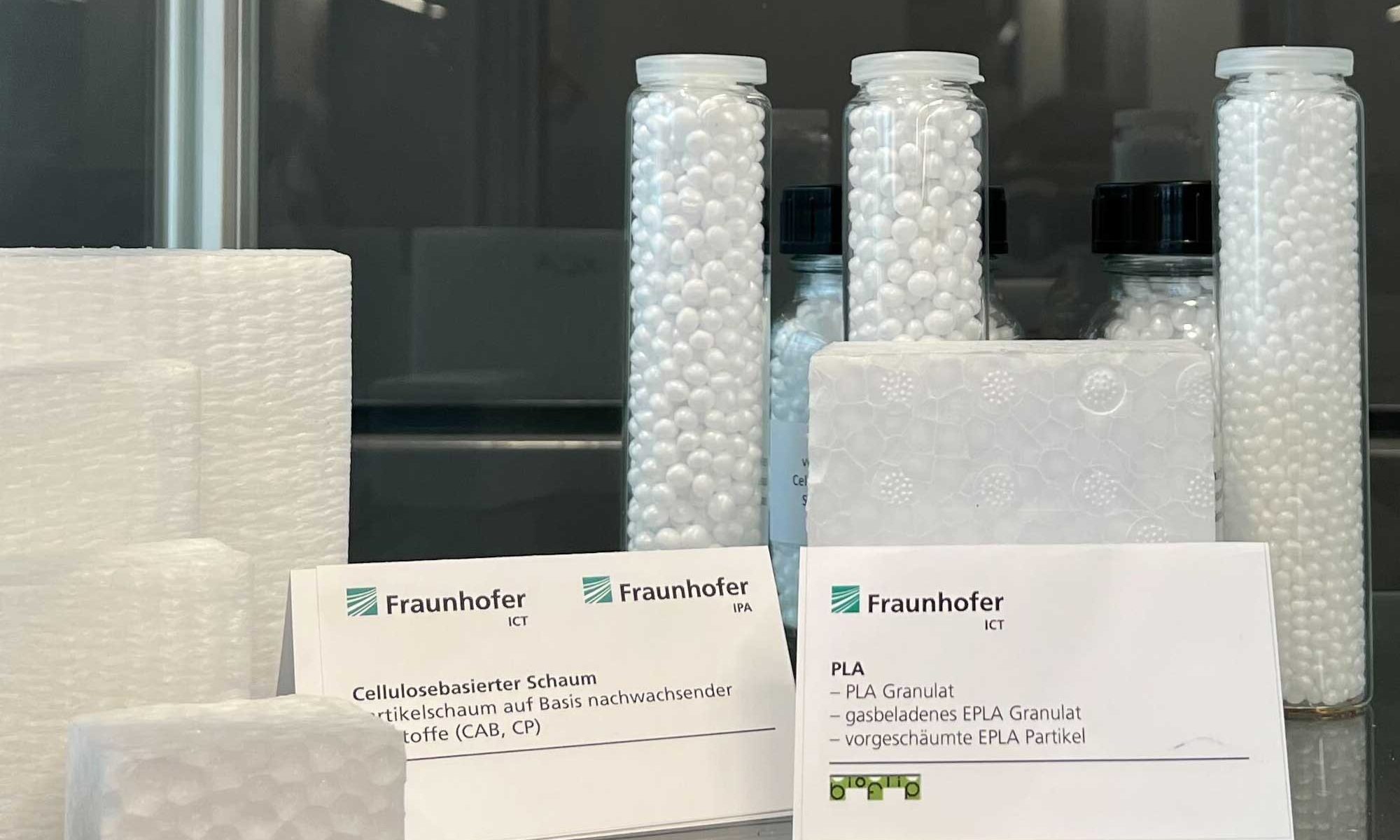Research into the production and commercialisation of new and more sustainable materials, that have at least the same properties as traditional plastics, is on the rise. Thanks to the fast-growing biotechnology sector, new consumer goods such as nylon made using genetically engineered microbes and alternative leather made from mushroom roots or cacti are arising.
These novel biomaterials have a lower carbon footprint compared to traditional plastics and usually require less energy to produce. Therefore, they have been in growing demand in multiple sectors. Particularly, they show great promise in the packaging industry, a sector responsible for producing over 50 million tons of waste (paper, cardboard, plastic, and glass) in 2020, according to Eurostat. Paper, cardboard, and glass have already very high collection rates and are reused as materials for new products. However, collection and especially reuse of plastic are still at a very low level. Besides the low collection rate, different types of plastics are causing challenges in reuse as they need to be separated and then reused individually to maintain their material properties.
Beyond traditional plastics
In the packaging sector, novel biomaterial research focuses primarily on what is commonly known as bioplastics. In contrast to traditional plastics, which are derived from petroleum, bioplastics can be produced from fats and oils, corn starch, straw, or even recycled food waste. This makes them more sustainable and opens the door to biodegradable and compostable materials.
However, the use of bioplastics in the packaging sector is still an upcoming technology. Their production processes still need to be optimised to reduce their overall carbon footprint. Currently, not all bioplastics are completely oil-free and therefore might still have a detrimental effect on the environment if not properly managed. Furthermore, given the nature of these products, their proper recycling cannot always be guaranteed.
“At the moment there are no biomaterial collection or sorting systems established, which means that bioplastics cannot be incorporated into the common plastic recycling processes,” says Christoph Mack, group leader of Foam Technologies at Fraunhofer ICT.
Within the EU-funded project INN-PRESSME, Mack and the team at Fraunhofer ICT are working on developing biobased particle foams using nanofibers from flax and hemp. These particles can ultimately be used for building insulation and thermal boxes for food delivery, among other applications. Through the incorporation of nano-scaled additives into biopolymers, they are hoping to increase the mechanical properties and functionality of the end-product.

“The process starts with a solid material that is melted and mixed with additives such as blowing agents. Once the material re-solidifies, we achieve expandable granules that once exposed to heat get foamed, like popcorn. These foamed particles could be, for example, what you find inside seating bags in lounge areas,” explains Mack. “Furthermore, we can even take it one step forward! By re-heating these particles inside a mould, we can give them a specific three-dimensional geometry and transform them into functional objects such as transportation boxes,” he adds.
Moreover, this bio-foam can be given an extra layer of functionality by adding natural active compounds that could provide antimicrobial properties, increasing, among other things, their food preservation capabilities.
The development of this bio-foam is one of 16 pilot lines that the INN-PRESSME project is currently working on. The project is an Open Innovated Test Bed (OITB) that aims to support European companies to develop their products using biobased materials. INN-PRESSME will be holding its second Open Call from the 2nd of May to the 15th of June 2023. SMEs, RTOs, and large companies can apply to test their own innovative ideas in the biomaterials sector and get access to the services provided by the 16 project pilot lines.
Other innovations in biomaterials
In parallel to plant-based bio-foam, other biobased materials such as alginates (seaweed polysaccharides) are also showing promising potential. These have been shown to have film-forming ability, low oxygen permeability, and are tasteless and odourless, which make them great candidates for food packaging. Specifically, researchers are working on taking advantage of their water-solubility to create novel end-products such as edible food packaging.
Aside from the packaging industry, a wide variety of other sectors can benefit from the use of up-and-coming biomaterials. For example, at the University of Aveiro, in Portugal, researchers have developed a method for producing silk-like fibres from whey, a by-product of cheese production. In the field of transport, new types of batteries and fuel are currently being developed. This is the case with the novel melanin battery being developed at the University of California. This melanin-based battery is biodegradable and could be used to power medical devices and other small electronics.
As the world continues to tackle the multiple issues derived from climate change, the development of more sustainable and innovative solutions to the traditional manufacturing of consumer goods offers hope for a greener future. However, while biomaterials and bioplastics show promise, it is important to approach their use with caution, as their production and recycling processes are still in the early stages of development. Surprisingly, this issue is not due to a lack of technology but to a lack of motivation. Given that the use of new biomaterials is not yet widespread, incorporating their treatment into the current plastic recycling system can be quite inefficient. However, the first integrated biorefinery for the production and recycling of polylactic acid, or PLA (commonly produced bioplastic) is already in the planning phase. In this context, initiatives such as INN-PRESSME are changing the paradigm by pushing for new ways to reduce the use of oil-based plastic products with novel solutions that are based on recyclable fibre-based materials or recycle-ready bioplastics.
Images: Fraunhofer ICT



